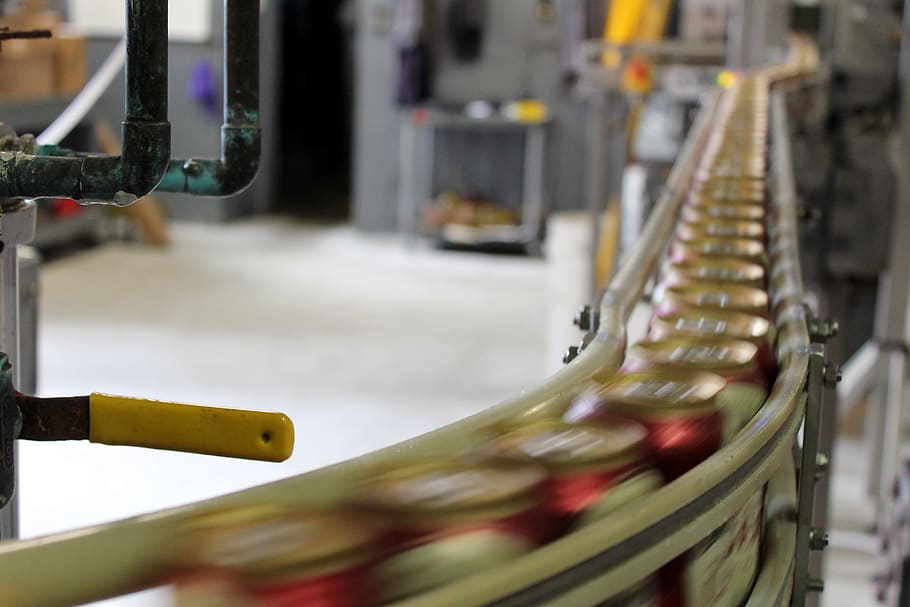
Conveyor belts are essential in many industries for transporting materials efficiently and reliably. Whether you’re dealing with light-duty tasks or heavy industrial applications, understanding how to choose, maintain, and optimize your conveyor belts is crucial for maximizing productivity and minimizing downtime.
Types of Conveyor Belts
1. Inclined Conveyor Belts
Inclined conveyor belts are designed to transport materials at an angle. They are perfect for moving goods from one elevation to another, such as loading materials onto a higher platform. To get the most out of inclined belts, ensure proper tension and regular maintenance.
2. Horizontal Conveyor Belts
Horizontal conveyor belts move materials along a flat plane. They are commonly used in manufacturing, packaging, and distribution centres. Maintaining a clean and debris-free belt surface is essential for smooth operation and longevity.
3. Light Duty Conveyor Belts
Light duty conveyor belts are used for applications requiring less strength and durability. These belts are ideal for moving small, lightweight items in industries such as food processing and packaging. Regular inspection and cleaning can help extend the life of light duty belts.
Choosing the Right Conveyor Belt

Selecting the appropriate conveyor belt for your application is key to ensuring efficiency and reliability. Here are some factors to consider:
1. Material Compatibility
Choose a conveyor belt material that is compatible with the products being transported. For example, food-grade belts are necessary for the food industry, while heavy-duty belts are needed for mining or construction.
2. Load Capacity
Ensure the belt can handle the load it will be carrying. Overloading a conveyor belt can cause premature wear and tear, leading to frequent breakdowns. Consult with a professional to determine the correct load capacity for your specific needs.
3. Environmental Conditions
Consider the operating environment of the conveyor belt. Factors like temperature, humidity, and exposure to chemicals can affect the performance and lifespan of the belt. Select a belt that can withstand these conditions.
4. Professional Guidance
Engage a professional to help you choose the right conveyor belt. Professionals can provide valuable insights into the best materials and designs for your specific application, ensuring optimal performance and longevity.
Maintaining Conveyor Belts for Longevity
Proper maintenance is essential to keep your conveyor belts running smoothly. Here are some maintenance tips to follow:
1. Regular Inspections
Conduct regular inspections to identify any signs of wear, damage, or misalignment. Check for frayed edges, unusual noises, and uneven wear patterns. Early detection of issues can prevent major breakdowns.
2. Cleaning and Lubrication
Keep your conveyor belts clean and lubricated. Remove debris and build-up regularly to prevent damage and ensure smooth operation. Use appropriate cleaning agents and lubricants to avoid degrading the belt material.
3. Tension Adjustment
Maintain proper tension in your conveyor belts. Over-tensioning can cause excessive wear on bearings and pulleys, while under-tensioning can lead to slippage and inefficiency. Use a tension meter to achieve the ideal tension.
4. Professional Maintenance
Hire a professional for periodic maintenance. Professionals have the expertise to perform detailed inspections, adjustments, and repairs that can significantly improve the performance and lifespan of your conveyor belts. Regular professional maintenance ensures your belts operate smoothly and efficiently.
Optimizing Conveyor Belt Performance
To get the most out of your conveyor belts, consider implementing the following optimization strategies:
1. Load Distribution
Ensure even load distribution on your conveyor belts to prevent uneven wear and tear. Overloading one side of the belt can cause misalignment and reduce the lifespan of the belt. Distribute the load evenly across the belt surface.
2. Speed Control
Adjust the speed of your conveyor belts to match the production requirements. Running the belts at an optimal speed can reduce wear and energy consumption. Use variable speed drives to control the belt speed accurately.
3. Belt Alignment
Proper alignment is crucial for preventing belt slippage and uneven wear. Regularly check and adjust the alignment of your conveyor belts. Use alignment tools and techniques to ensure the belts run straight and true.
4. Professional Consultation
Consult with professionals to optimize your conveyor belt system. Professionals can provide valuable advice on improving efficiency, reducing downtime, and extending the lifespan of your belts. They can also recommend upgrades and modifications to enhance performance.
The Role of Professionals
Engaging professionals for installation, maintenance, and optimization of your conveyor belts can make a significant difference in performance and reliability. Here’s how professionals can help:
1. Expert Installation
Professional installation ensures your conveyor belts are set up correctly from the start. Proper installation prevents common issues like misalignment and improper tensioning, leading to smoother operation and longer belt life.
2. Detailed Inspections
Professionals conduct thorough inspections to identify potential problems early. They have the knowledge and tools to detect issues that may not be visible to the untrained eye. Early detection and repair can prevent costly downtime and extend the life of your conveyor belts.
3. Specialized Maintenance
Professional maintenance services include detailed cleaning, lubrication, and adjustments that go beyond basic upkeep. Professionals can also perform advanced repairs and replacements, ensuring your belts remain in top condition.
4. Tailored Solutions
Professionals can provide customized solutions tailored to your specific needs. They can recommend the best materials, designs, and maintenance practices for your particular application, ensuring optimal performance and efficiency.
Enhancing Efficiency and Productivity
Mastering the use of conveyor belts in your industrial operations involves choosing the right belts, maintaining them properly, and optimizing their performance. By following these actionable tips and seeking professional assistance, you can ensure your conveyor belts operate efficiently and reliably, leading to enhanced productivity and reduced downtime. Embrace these practices to keep your operations running smoothly and efficiently in the GTA.
